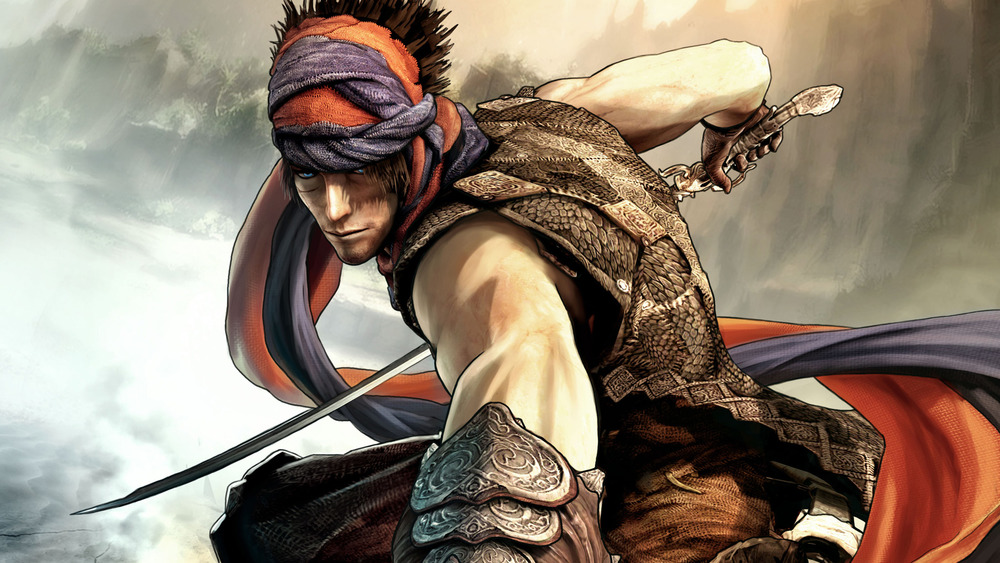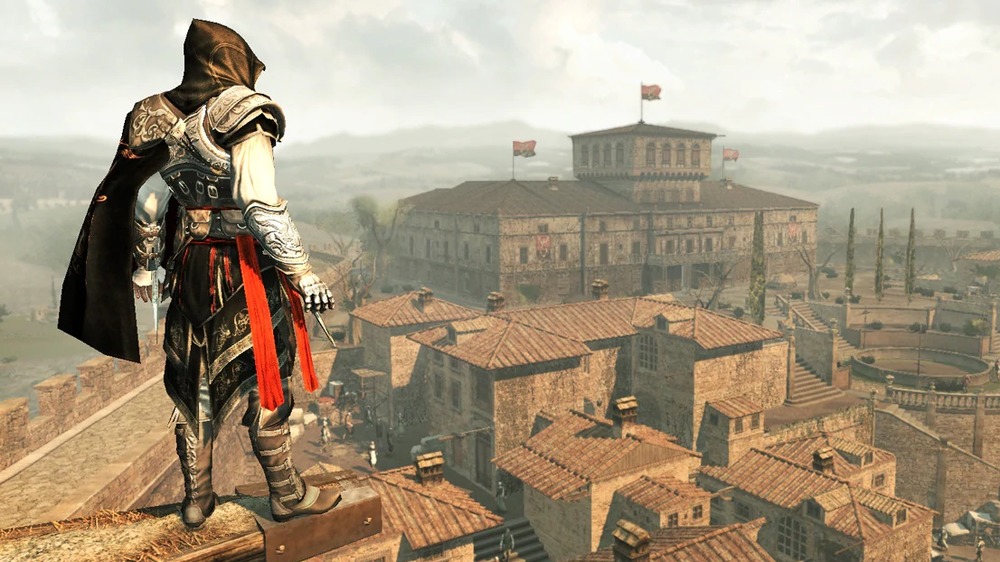The Game Franchise Assassin's Creed Was Supposed To Be A Spinoff Of
Over the last decade or so, the Assassin's Creed series has become an unlikely champion for publisher Ubisoft. The franchise launched in 2007 with a decent amount of hype thanks to the game's atmospheric, moody trailers and not much else. The setting, 12th-century Jerusalem, was somewhat obscure, and while it received praise upon release, many critics found the potential behind the concept more intriguing than the game that executed it.
However, the franchise delivered on that potential with its sequel, Assassin's Creed 2. A stronger protagonist, Ezio, a more recognizable setting (the Italian Renaissance during the 16th century), and better mechanics won Assassin's Creed 2 multiple Game of the Year awards. Ubisoft then began to pursue a yearly publishing schedule that would make the series one of the most recognizable in the video game industry and the company's best-selling franchise of all time.
Assassin's Creed almost seemed to come from nowhere, an all-new intellectual property for Ubisoft with no apparent heritage. However, it is actually a direct descendant of another wildly popular Ubisoft series. Here is the franchise that Assassin's Creed was supposed to be a spinoff of.
Assassin's Creed was first called Prince of Persia: Assassins
If things had gone the way Ubisoft had imagined back in 2004, Assassin's Creed wouldn't be Ubisoft's biggest franchise – Prince of Persia would. Prince of Persia: The Sands of Time was released in 2003 to immediate acclaim, after which the core Prince of Persia team, headed by director Patrice Désilets, took a holiday break and then returned in January 2004 to start a new project.
Many innovations that premiered in Assassin's Creed were direct reactions to the hardware limitations that had frustrated Désilets and his team when developing The Sands of Time. Désilets described his thinking at the time to Eurogamer as, "Oh, we'll have so much power that everything we wanted to do in Sands of Time, we'll be able to do this time around."
While Désilets' new project would be a departure from The Sands of Time, he described himself as "still wired to do a Prince of Persia game." So Désilets and his team began playing with the idea of creating a world based on the Prince's bodyguard's story, calling it Prince of Persia: Assassins.
Prince of Persia mechanics take on a new life in Assassin's Creed
When Patrice Désilets returned to design the next Prince of Persia game, they received a mandate from Ubisoft's higher-ups. Their goal was to develop a game that would "redefine the action-adventure genre into the next generation of platforms." With such a lofty objective, Désilets and his team tried to integrate the mechanics that had brought them success in Prince of Persia: The Sands of Time while innovating all-new ones. One of those, the storytelling device that reframes death as a simple misremembering by the Prince, became Desynchorization in Assassin's Creed.
Another critical element of Assassin's Creed, Synchronization, would become standard across open-world action-adventure games. To Synchronize, Altair would climb to the top of a tall building, revealing landmarks and mini-map markers. This scaling mechanic appears in many of Assassin's Creed's later peers, including Batman: Arkham Asylum and Breath of the Wild.
As Assassin's Creed gradually became more independent of the Prince of Persia brand, it became clear that the worlds would need to be distinct. Ubisoft settled on the name that would define open-world action-adventure, and the rest is history.



